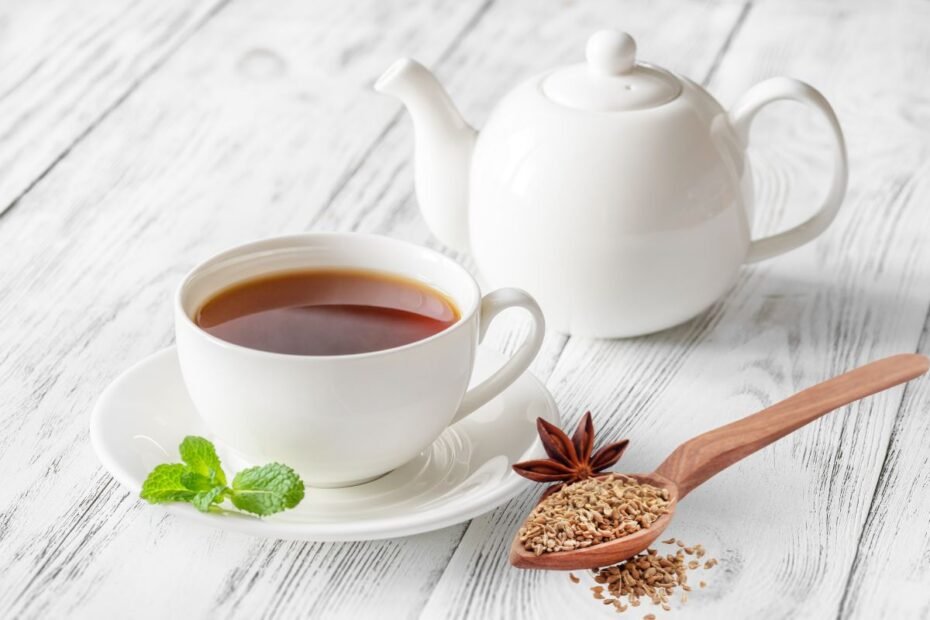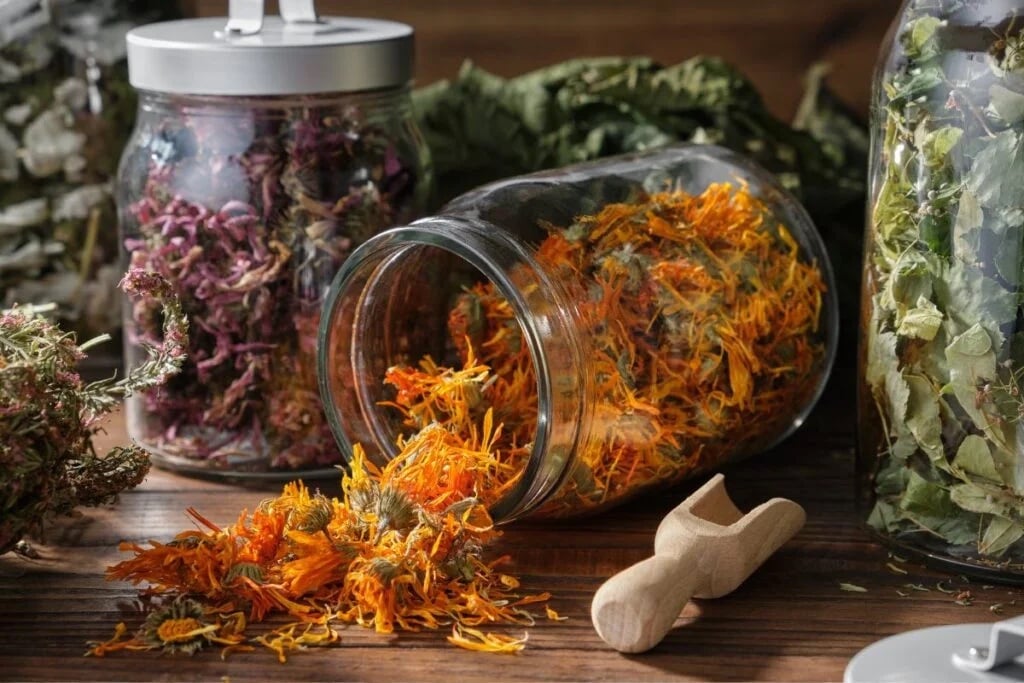Anise, aniseed, or rarely called anix, is a familiar taste to many. The products that bring out this rather specific aniseed flavor are cough syrups, lozenges, lollipops, and licorice gum. Aniseed has an unconcerned taste; it is either a favorite or not. Have you ever tasted anise tea? Even one made from anise grown at home in the herb bed? People use anise seeds to make anise tea. The benefits of anise tea include its healing properties and effectiveness in treating a wide range of ailments.
Anise: Let’s Familiarize
Aniseed (Anisum vulgare), also known as anise or anix (Pimpinella anisum L.), is a close relative of parsley, carrots, celery, coriander, fennel, and caraway.
Anise is an herbaceous plant growing up to 1 m tall. It looks like a caraway plant. It has dark green leaves arranged in three tiers. The lower leaves are heart-shaped, the three-lobed middles and the uppers are feathery with a toothed margin. The flowers are white, umbellate, and clustered at the top of the stem. In late summer, the inflorescences ripen into medicinal seeds.
Aniseeds originate from Egypt and the eastern Mediterranean. History says that Benedictine monks brought anise seeds to Germany around the 8th century, from where the plant spread to many European countries. Today, aniseed grows or is cultivated on almost every continent. Anise does not grow naturally in some areas but is often cultivated as an annual medicinal plant.
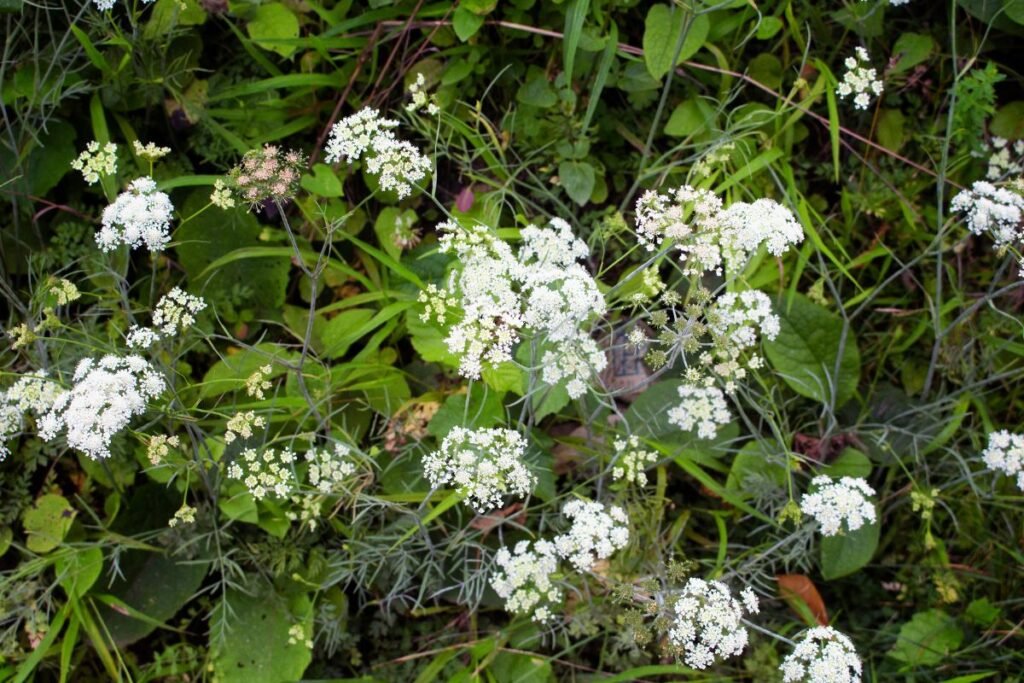
When to Harvest Aniseed Raw Material
You need to collect anise seeds with medicinal properties in late summer or early autumn. You also can harvest the seeds before they are fully ripe. The method of harvesting is irrelevant, which doesn’t impact the final quality of the product but does impact the duration of the process.
The ripening of aniseed begins around July. The seeds are green in the inflorescence when they are not fully ripe. They should’ve collapsed when you shook the plant.
Anise seeds ripen around September. However, you should check the weather conditions. Sometimes, frost can prevent full ripening. Once ripe, the aniseeds take on a bright brown color and crumble when the plant is shaken.
Experts recommend harvesting aniseed material before it is fully ripe.
How to Collect Not-Ripe Anise Seeds
- Cut off the aniseed florets together with the stem (long enough to tie them together).
- Bundle the flowers into small bundles and hang them upside down.
- Store the bundles in a cool, airy room.
- Place a container or paper (or other material) under the bundles to ‘catch’ the crumbling seeds.
- When the seeds turn brown and crumble easily, shake the bundles well sometimes.
How to Collect Ripe Anise Seeds
Collecting naturally ripened aniseed is a shorter process. For a smoother workflow, here are some recommendations:
- Cut the aniseed flowers (with the stem part) in the morning while the plants are still in dew (this will reduce the chance of the seeds falling out).
- Hang the flowers over lined paper or cloth in a dry, warm room and let them dry naturally.
- When the inflorescences wilt and the seeds start to crumble, shake them out.
Once collected, store the aniseed in an airtight container, such as a jar, in a dark and cool place. The seeds retain their beneficial properties for one year. After that, their effectiveness begins to decline. Incidentally, you can sow the anise seeds in spring, if you collected them in autumn.
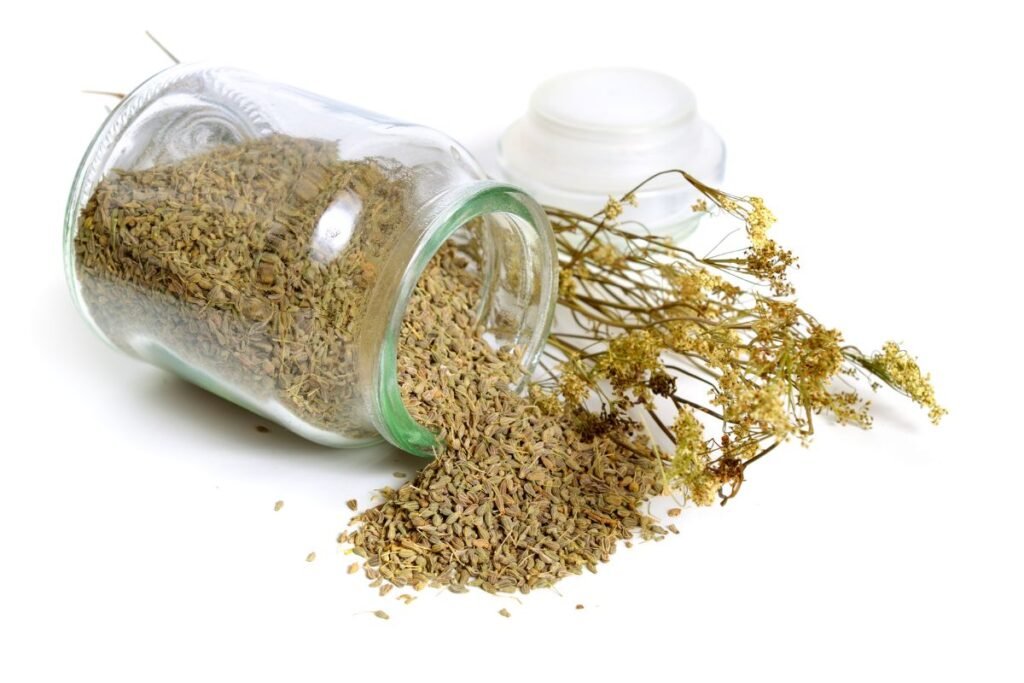
Beneficial Properties of Anise Seeds
Historical research has shown that in ancient Egypt, around 1500 BC, anise was a remedy to treat many diseases. In folk medicine, aniseed is still used as a medication for respiratory diseases and digestive disorders. The therapeutic effects of aniseed are being studied by scientists.
Anise seeds have a rich nutrient composition. They are low in calories but rich in vital minerals such as iron, manganese, and calcium. Aniseed contains essential oils with components of anethole and tarragon. They are also rich in antioxidants—immune boosters that prevent chronic diseases and inflammation.
Research confirms or identifies many essential areas where aniseed treatment is promising:
- Aniseed is effective in reducing the symptoms of depression. Their effects are even comparable to some types of antidepressants. Consumption of 600 mg to 9 grams of aniseed per day is effective in alleviating symptoms of depression.
- A test-tube study showed that aniseed and anise essential oils were particularly effective against certain strains of fungi, including yeasts and dermatophytes, a type of fungus that can cause skin diseases.
- Anethole in aniseed suppresses the growth of a cholera-causing specific strain of bacteria.
- The anethole in aniseed also effectively inhibits the growth of bacteria that cause respiratory diseases. Aniseed is an effective cough remedy and expectorant.
- Aniseed has a proven effect on mucus reduction in the nose or throat. In one clinical study, the application of aniseed was compared with fluticasone nasal spray for allergic rhinitis. The anise extract spray was more effective in relieving the symptoms of allergic rhinitis.
- Aniseed helps with bloating. It has a mild laxative effect.
- Aniseed reduces the secretion of stomach acid and prevents the formation of stomach ulcers. However, more research is still needed to reach broader conclusions.
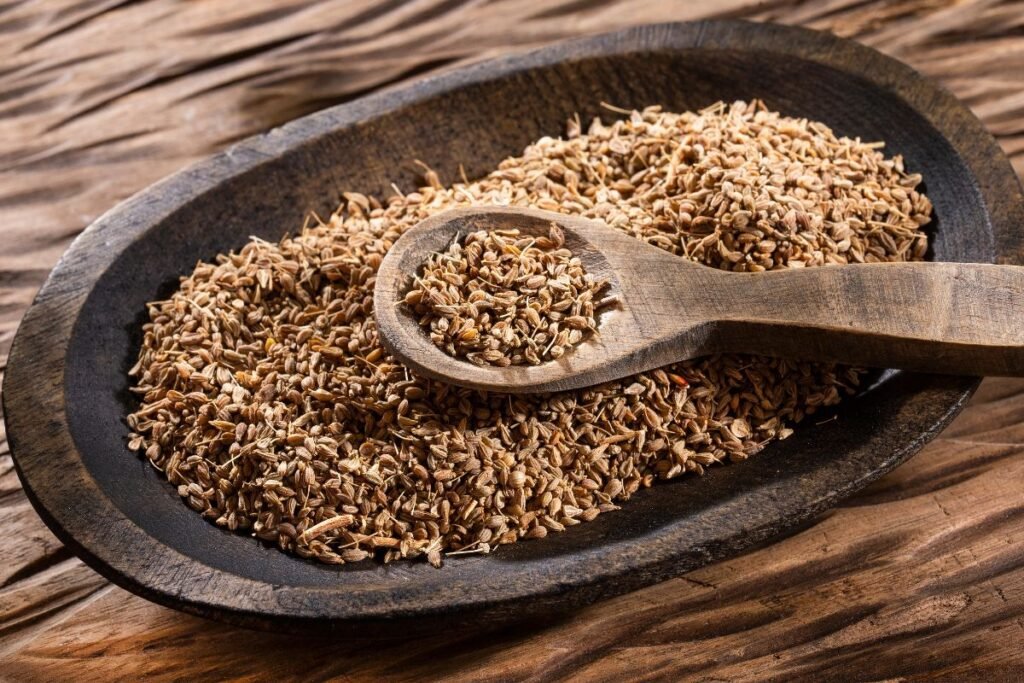
Anise Tea: How to Prepare It?
Aniseed tastes like liquorice. It is no coincidence that licorice and anise are a duo in sweets, drinks, etc.
Aniseed tea is most often used for medicinal purposes. However, anise lovers can certainly enjoy it for a moment of respite.
Prepare this tea as a decoction, which will maximize the beneficial properties of the aniseed. Use 0.5 teaspoons of anise per cup of water. The decoction is easy to prepare:
- Bring the water to a boil in a saucepan.
- Add the anise seeds to the boiling water.
- Boil for 2-3 minutes.
- Turn off the heat, cover the pot, and simmer for 5 minutes.
- Strain the tea and drink.
If you use aniseed decoction to treat respiratory diseases, take it as follows: 100 ml of tea three times a day, morning, noon, and night.
If you use aniseed decoction to alleviate digestive ailments such as bloating and colic, take it as follows: drink a cup of tea about 10 minutes before a full meal.
Benefits of Anise Tea and Oil for Skin Beauty
Aniseed essential oil is commonly one of the active ingredients in professional cosmetic products. You can add this oil also to homemade beauty products. However, you can use anise decoction as an effective skincare product.
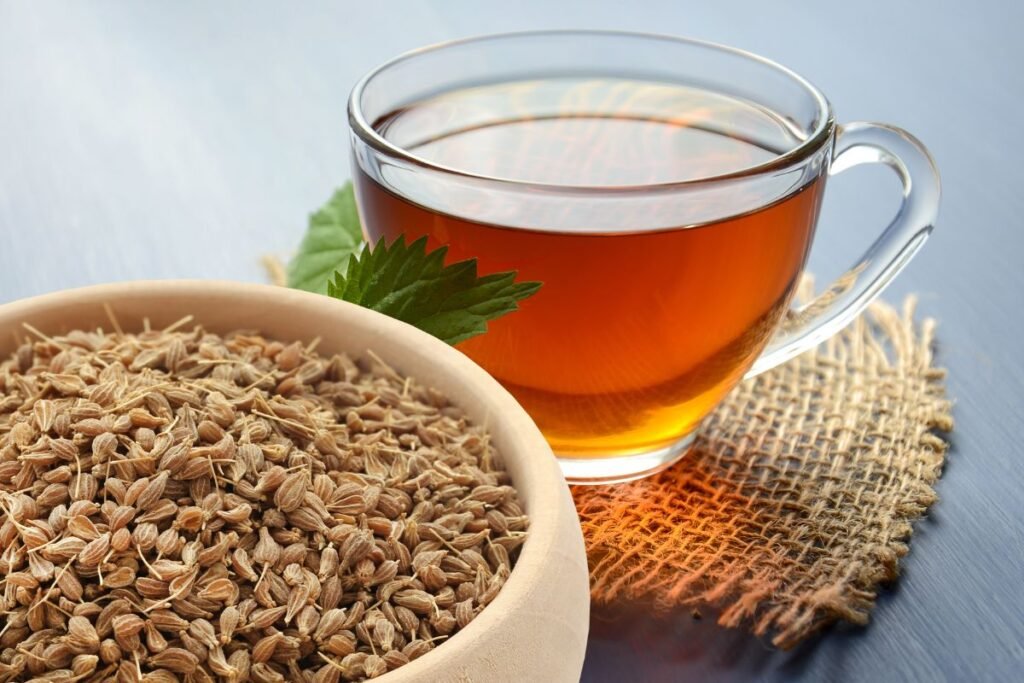
Elasticating Face Mask with Anise Decoction
Ingredients:
- 1 teaspoon of anise decoction,
- 2 tablespoons of fresh cottage cheese,
- 1 tbsp. finely grated carrot.
Mix all the ingredients well until smooth. Apply the mask to the face and leave it on for 10 minutes. Wash off with just warm water.
Moisturising Face Mask with Anise Decoction
Ingredients:
- 1 teaspoon of aniseed decoction,
- 2 tablespoons of grated cucumber,
- 1 tablespoon (or a little more) of oatmeal.
Grind the flakes in a mortar. Then mix them until creamy and smooth texture. If the mixture is too runny, add more ground oats. Apply the finished mask to the face and leave it on for 10 minutes. Wash off with just warm water.
Benefits of Anise Tea for Women. Can It Be A Welcome Ally at Crucial Stages of Life?
Anise substances have properties that mimic the effects of estrogen. This is important during the menopause, as this effect of aniseed can reduce menopausal symptoms.
In one four-week study, 72 women suffering from hot flushes took a placebo or a capsule containing 330 mg of aniseed three times a day. Almost 75% of participants, who took anise declared the severity and frequency of hot flushes reduced.
The compounds in aniseed, especially the essential oil (anethole), may help prevent bone thinning. This process often occurs during menopause.
Despite these promising results, the effect of aniseed on menopausal symptoms continues to be investigated.
Folk medicine advocates promote the use of aniseed tea for lactating women. It stimulates the mammary glands and increases milk production. This property of aniseed is also being explored by medical science. However, not enough research has been carried out to make a firm statement about the benefits of anise tea. On the other hand, existing studies have not documented any side effects on breastfed babies.
Incidentally, anise can also affect the smell of breast milk, which may not necessarily be to the baby’s liking. The most essential point is that breastfeeding women should not abuse this tea. An overdose of aniseed tea can harm both the baby and the mother.
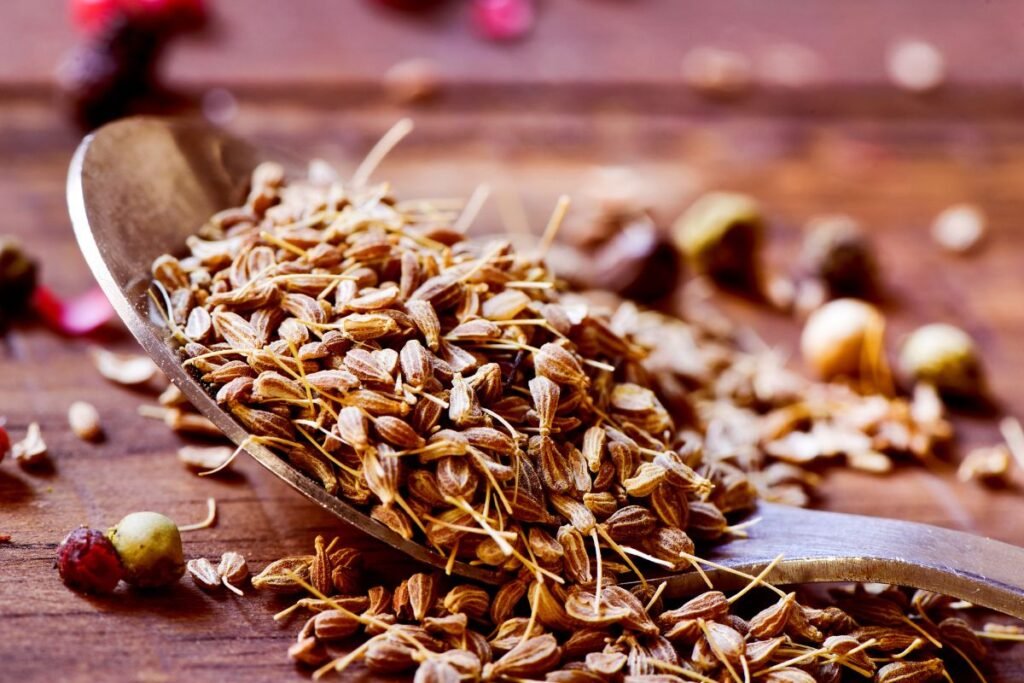
Aniseed Is A Brilliant Spice for Food Seasoning
Both whole and ground anise seeds can be added to various dishes. However, Do not use anise too much. If you are an aniseed fan, or maybe you are just discovering aniseed, enrich your food not only with additional flavors but also with health-enhancing substances. You can use aniseed to:
- for desserts,
- in baked goods,
- fish dishes,
- poultry dishes,
- vegetable dishes,
- hot and cold drinks,
- in combination with citrus or exotic spices.
Side Effects of Anise Tea
Moderate consumption of aniseed tea is considered safe for most people. The recommended daily dose is up to 20 grams of aniseed for adults with no adverse contraindications to the product. It is strongly recommended not to exceed the safe daily intake of aniseed, as this may provoke allergic reactions.
Avoid anise tea or use it only after consulting your doctor if:
- You are allergic to plants in the same family: fennel, celery, parsley, and caraway.
- If you have or have had breast cancer or endometriosis and are taking hormonal medication for this.
- If you are pregnant.
Sources:
- https://pubmed.ncbi.nlm.nih.gov/16375827/
- https://pubmed.ncbi.nlm.nih.gov/15368661/
- https://pubmed.ncbi.nlm.nih.gov/24250540/
- https://pubmed.ncbi.nlm.nih.gov/15368661/
- https://www.healthline.com/nutrition/anise
- https://www.gardeningknowhow.com/edible/herbs/anise/harvesting-anise-seed.htm
Associative photos from © Canva.
